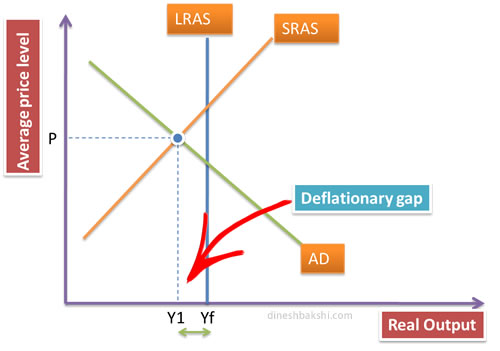What is deflationary gap?
Deflationary gap is the difference between full level of employment and the actual level of output of the economy.
We can see in the diagram below, that the economy is operating a level ‘a’ below the Yf (full level of employment).

The consequence is that due to deflationary gap all the resources of the economy are not being used in the optimum level and they are idle. This results in unemployment and low level of output. This is not desirable for any government. In order to reduce/eliminate the deflationary gap, the government uses expansionary fiscal policy.
Government will either increase its spending or reduce taxes (or both) in order to stimulate the aggregate demand. Increase Government spending will result me more projects being funded by the government and thus employment and output will increase. Even a lower tax rate will result in more disposable income for households and encourage consumption.
Increased G and C will lead to higher AD. However, this might also lead to higher prices/inflation in the economy.
What is inflationary gap?
Inflationary gap is when the Aggregate demand exceeds the productive potential of the economy.
As we can see through the diagram, the economy is operating at a level above the full employment level of the output. Due the limitation of the economy to fulfil this increased demand the average price level in the economy increases resulting in inflation.

In this case the government can use contractionary fiscal policy to control inflation and bring down the AD.
Watch a Video





